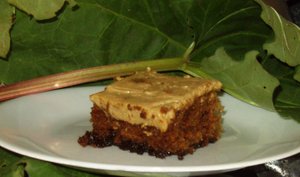-----------------------
Whole Grain Goodness
Deciding to eat more whole grains is a big step for many people. But sometimes what is even more daunting is how to go about it. So below I have described a few of the things we have done. Whole Grain Goodness
The biggest step we have taken is to start grinding our own grain. We've made a few forays into the world of cooked wheat berries but I must admit that despite my best intentions, we don't eat them that way very often. So most of this page will have to do with grinding flour--how to get started and what to do with the stuff once you've got it.
Kamut -- Hard Red Wheat -- Pearled Barley -- Rye -- Spelt
Grinding Flour
 We began to get into a habit of grinding any time we were standing around talking to someone. That way we'd have flour set aside for later when we wanted to make cookies without having to stand there for a half hour grinding first. Eventually we broke down and bought a grinder -- a Whisper Mill made by Creative Technologies. We didn't research our purchase. We simply went with the electric grinder that was sold by the same company from which we'd bought the grain (Provident Pantry). It cost us over $200 (which floored us.... But by that time we were hooked on freshly ground flour.) If you'd rather do a little grinder research before shelling out your dough, you might want to check Walton Feed's page that compares different grinders.
We began to get into a habit of grinding any time we were standing around talking to someone. That way we'd have flour set aside for later when we wanted to make cookies without having to stand there for a half hour grinding first. Eventually we broke down and bought a grinder -- a Whisper Mill made by Creative Technologies. We didn't research our purchase. We simply went with the electric grinder that was sold by the same company from which we'd bought the grain (Provident Pantry). It cost us over $200 (which floored us.... But by that time we were hooked on freshly ground flour.) If you'd rather do a little grinder research before shelling out your dough, you might want to check Walton Feed's page that compares different grinders.

Grinding Flour
Grinding flour sounds harder than it is and has a far greater payoff than you'd ever imagine. You can buy ground flours made from whole grains but you never know how long they've been sitting on the counter before you buy them. Their flavors simply aren't as fresh as when you grind the grain yourself and use it right away.
We happened upon grinding flour somewhat round-aboutly. We had been buying our pre-ground grains in bulk at Rainbow grocery (in San Francisco), but as the Y2K "threat" loomed we decided to buy some items (that we would use anyway) just in case. We figured it couldn't hurt to have a few gallons of wheat, rice, beans and popcorn lying about. We also bought a hand grinder (assuming that if the Y2K debacle was true, then we wouldn't have electricity to use to grind the grain. And if an earthquake came along instead, we'd be ready for that too). When we ran out of oat flour a few months before the New Year, we pulled out a 5 gallon tub of oats and gave the grinder its first run.
We found that hand grinding could be either relaxing or annoying, depending on whether we were in a hurry or not. Our 3 year old loved to play with the oat berries and turn the handle on the grinder. And it was impressive when we pulled out a tub of hard red wheat to see that not all grains grind the same. (The oats grind much quieter and more smoothly. The wheat seemed to be at least twice as loud and a tad harder to grind as it seemed to occasionally catch in the grinder.)
 We began to get into a habit of grinding any time we were standing around talking to someone. That way we'd have flour set aside for later when we wanted to make cookies without having to stand there for a half hour grinding first. Eventually we broke down and bought a grinder -- a Whisper Mill made by Creative Technologies. We didn't research our purchase. We simply went with the electric grinder that was sold by the same company from which we'd bought the grain (Provident Pantry). It cost us over $200 (which floored us.... But by that time we were hooked on freshly ground flour.) If you'd rather do a little grinder research before shelling out your dough, you might want to check Walton Feed's page that compares different grinders.
We began to get into a habit of grinding any time we were standing around talking to someone. That way we'd have flour set aside for later when we wanted to make cookies without having to stand there for a half hour grinding first. Eventually we broke down and bought a grinder -- a Whisper Mill made by Creative Technologies. We didn't research our purchase. We simply went with the electric grinder that was sold by the same company from which we'd bought the grain (Provident Pantry). It cost us over $200 (which floored us.... But by that time we were hooked on freshly ground flour.) If you'd rather do a little grinder research before shelling out your dough, you might want to check Walton Feed's page that compares different grinders.
We don't use store bought white flour at all (well, except for making play-dough and I've used it also for making pirogi) and only occasionally buy other preground flours (such as the occasional bag of garbanzo bean flour or quinoa flour). Our favorite general purpose flour so far has been hard red wheat. It's packed with flavor. In fact, we've had friends beg us for our chocolate chip cookie recipe only to have them be disappointed when we tell them to just look on the back of a bag of Nestle's chocolate chips. (They'd rather get a new recipe than start using better ingredients.)
We don't make our own bread. At least, not often enough to say that we do. (We might make bread a few times a year.) But we do make lots of cookies, pancakes, waffles, muffins and scones. We generally go through one jar (see the empty jar to the right of the Whisper Mill in the above picture) every week or so.
The Grinding Process
Turning berries into flour is quite simple. With a hand grinder you pour the berries in, turn the handle and the flour comes out. With the Whisper Mill, the process is the same though the experience is rather different. The Whisper Mill, despite the word "whisper" in the name, is quite loud. The flour also tends to get heated up a bit (though not enough, I don't believe, to remove nutrients or spoil the oils).
With both the hand grinder and the electric one, you can set the fine-ness (is that a word?) of the flour. In other words, if you're grinding something like corn and you'd rather make polenta rather than corn meal, or corn meal rather than corn flour, you can set the grinder to do exactly that.
Important things to think about:
* Berries have a habit of running for freedom. In other words, if you can spill some, you will, no matter how careful you try to be. So you may want to set the mill and bag/tub of berries inside a larger tub of some sort.
* When you grind the flour (with the mill, not by hand) you'll end up adding a bit of flour to the air which will settle back as a beautiful white dust all over everything in your kitchen. There are things you can do to keep this at a minimum (like make sure the container that the flour is shooting into is entirely closed. And don't try to grind too much flour at once).
* And as you transfer flour from the grinder to another container, you may want to put newspaper underneath the whole operation so that when you're done you can dump any fallen flour into the container as well.
Advantages of Grinding Your Own Flour
The greatest advantage to grinding your own flour is having fresh flour. It really does taste better. If you doubt me, then come over and try some of my chocolate chip cookies or some of Rob's waffles. Store bought flour is sometimes so old that it's rancid before you get it home. Whole wheat berries can stay fresh longer than whole wheat flour. (Remember, the whole reason that white flour became all the rage back in the early 1900's was because it was more nutritious, because it's not. It was because it will keep fresh several times longer than whole grain flour. But as far as I'm concerned, it doesn't matter how much longer white flour remains fresh, it's bad for your health and it tastes like glue.)
Another advantage that crosses my mind once in awhile as I'm grinding flour is that when I grind my own flour, I know exactly what bugs are (or are not) in my flour. I've heard that we eat several bugs a year that get ground into the food that we buy prepackaged. Yuck!
You can also grind as much, or as little, flour as you need. If you only need a half cup of some oddball flour twice a year, you can buy the grain whole (which will keep throughout the year) but grind the flour only when you need it (since it would probably be bad by the next time you needed it if its something you infrequently use).
And you can buy the grain in bulk which is cheaper than buying the preground stuff. (Granted, you have to shell out dough for that grinder, but if you go in on it with someone and share it, you'll save yourself a heap of dough.)

You don't have to grind grain to enjoy its goodness. In fact, you've probably already had cooked, whole berries of grain and not even given it a thought. Brown rice is a whole grain cooked whole and steel cut oats are made from a whole grain that is almost whole (often only chopped into halves or thirds, not mashed or ground).
The Joy of Cooking has a quite helpful description of grains and how to cook them. Suggestions include toasting the grain first, cooking the grain in broth or some other liquid besides water, and combining several grains for flavor and nutrition. Some grains can be cooked in a relatively short amount of time such as rice and oats. Others require presoaking to help soften them. And grains can be eaten as is (such as in a porridge, what we American's would call "hot cereal"), as a side dish (as rice might be), or in a salad.
Different grains also provide different nutrients. Amaranth has more protein, iron, magnesium, and phosphorus than most other grains. Oats are known for providing fiber. Quinoa (pronounced keen-wa) is a complete protein. (Check out Gretchen's list of grains for more in-depth descriptions.)
Recipes from the low-fat vegetarian archive think apple-barley, kamut-biryani, and quinoa-vegetable-jambalaya
Descriptions of the grains with recipes to boot
Descriptions of the grains with recipes to boot




